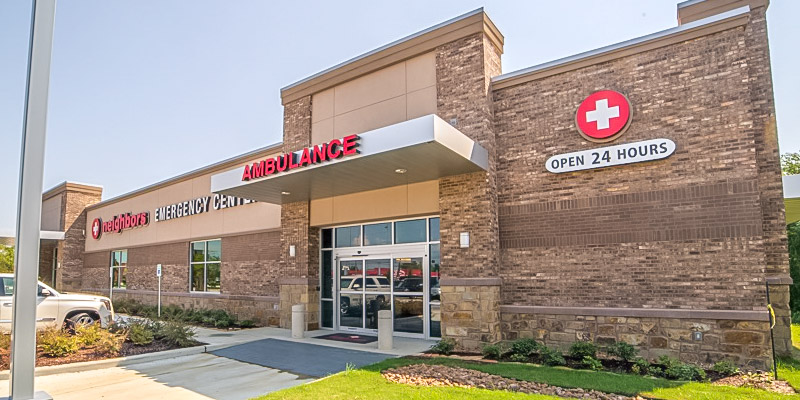Emergencies can happen anytime, anywhere. And when they do, you’ll need to quickly decide where to go: urgent care, or emergency room? You may see the words ‘urgent’ and ‘emergency’ and think they’re interchangeable due to the immediacy those words portray. But when it comes to sudden illness or injury, knowing the difference between an urgent care and emergency room can save your life.
What’s the Difference Between Urgent Care and the Emergency Room?
There are distinct differences between urgent cares and ERs, particularly in the level of care provided at each. If you have an illness or injury that you would typically go to your primary care physician for, then it’s probably more appropriate to go to an urgent care. Emergency rooms are equipped and staffed for more complex or critical needs. Life- or limb-threatening illnesses and injuries should be addressed at an emergency room.
While some urgent cares may provide imaging and laboratory services, they typically do not cover as many needs as ERs do. They also may not be able to provide results on-site, which could have you waiting days to find out what is wrong. ERs provide on-site lab services in order to diagnose and treat immediately.
Urgent care centers are often open 7 days a week and beyond typical physician hours. They are there for you when you cannot see your primary care physician. Operating hours vary among sites, but the average hours for urgent care centers is 7:00am-9:00pm. ERs are open 24/7/365, in order to treat emergencies that cannot wait until the next day for care.
When to Go to Urgent Care vs ER
As mentioned, it’s best to go to an urgent care center if you’re experiencing an illness or injury that you’d typically go to your primary doctor for. If your doctor is unavailable due to office hours, or they are booked up, then an urgent care may be right for you.
Here are some examples of non-life-threatening conditions that you should go to an urgent care for:
- Minor animal bites (if they’re not poisonous)
- Cough, sore throat, high fever, or flu
- Cuts that require stitches
- Earaches and sinus pain
- Minor burns
- Minor headaches and breathing problems
- Rashes
- Minor sports injuries
- Urinary tract infections
- Vomiting, diarrhea, and stomach or belly pain
When to Go to the Emergency Room
While the symptoms above are also treatable at emergency rooms, it’s important to note the severity of the problem. Life-threatening conditions that should be treated in an emergency room include:
- Heart attack symptoms (chest pain, trouble breathing, pain or discomfort in one or both arms or shoulders)
- Stroke symptoms (trouble speaking or understanding speech, sudden weakness in the face, arm, or leg, sudden dizziness)
- Severe trauma including head injury
- Severe bleeding, or continuous bleeding that doesn’t stop with pressure after 5 minutes
- Loss of consciousness
If you go to an urgent care with severe symptoms, the doctor will send you to an emergency room. But when it comes to emergencies, time is of the essence, so it’s important to go to the correct place to begin with. For a full list of emergency services offered at Neighbors Emergency Center, visit our services page.
Urgent Care vs ER FAQs
If you’ve been confused about the difference between urgent cares and emergency rooms, you’re not alone. Many people confuse the two and are then shocked by the bill (don’t worry, we’ll get to that shortly). Here are some frequently asked questions about urgent care vs ER:

Do urgent cares provide X-rays?
Yes, many urgent cares can perform x-rays. Injuries can happen anytime and sometimes, they’re not severe but also can’t wait for your doctor to be available. In this case, going to an urgent care for this type of exam is a good option. ERs also offer x-rays, in addition to other imaging services such as CT Scans and Ultrasounds.

Do urgent cares provide ultrasounds?
Some urgent cares can perform ultrasounds, but it is rarely needed there, so many centers do not. If an ultrasound is needed in an emergency, then it’s likely more of an emergency than you think, in which case you should visit an ER instead.

Is urgent care quicker than the ER?
Traditionally, urgent care visits are faster than a hospital ER. ERs will see patients with more severe cases first, so if your symptoms are not dire, then you may be waiting a while to be seen. However, at freestanding ERs, such as Neighbors Emergency Center, wait times are significantly lower than at hospital ERs and are comparable to urgent care centers.

Do urgent cares do lab testing?
Yes, many urgent care centers provide on-site lab testing; however, you’ll find more robust options at an ER. At Neighbors, we offer on-site lab services with results often available within 30 minutes. Our services are COLA-accredited, meeting state and national regulatory standards for quality laboratory practices. We test for many communicable diseases, such as flu, mononucleosis, strep throat, RSV, COVID-19, and more. We conduct blood testing for complete blood cell counts (CBC), blood clotting, glucose testing, and more.
Neighbors is also able to do complete metabolic panels in order to monitor kidney function and liver panels in order to evaluate your liver function. These are just some examples of the common tests we offer with on-site lab services. We can do the majority of required testing at our centers and if necessary, can send out labs that require cultures or further evaluation.

Are ERs more expensive than urgent cares?
Yes, ERs are traditionally more expensive than urgent care centers, but don’t let that deter you from getting the care you need. ERs can treat all the same conditions that urgent cares can, but urgent cares cannot treat all the same conditions that an ER can.
Many ERs will work with your insurance as well. At Neighbors, all locations are in-network with BlueCross BlueShield, Aetna, and Cigna. All our locations accept all insurances, as well as Medicare. If you’re confused about what this means, check out our blog about the difference between ‘in-network’ and ‘accepted’ insurance. Also, you can visit our insurance information page to understand more about how we can work with your insurance.
Why Choose a Freestanding Emergency Room
Aside from short wait times, there are many benefits to visiting a freestanding ER, like Neighbors. Here are some:
- Open 24/7/365, even during holidays
- Board certified emergency physicians
- Readily available imaging services, including x-ray, CT scans, and ultrasounds
- Radiology reports within 30 minutes
- Faster lab and imaging results
- Discharge in a timely manner
Emergencies can happen any time, anywhere. Where will you go? The choice is clear. Neighbors Emergency Center is open 24/7/365 with short wait times and access to quality diagnostic and treatment services. We know we don’t see you on your best day, but we’re here to make it better, because you’re more than a patient. And we’re more than just your local ER. We’re your Neighbors!

